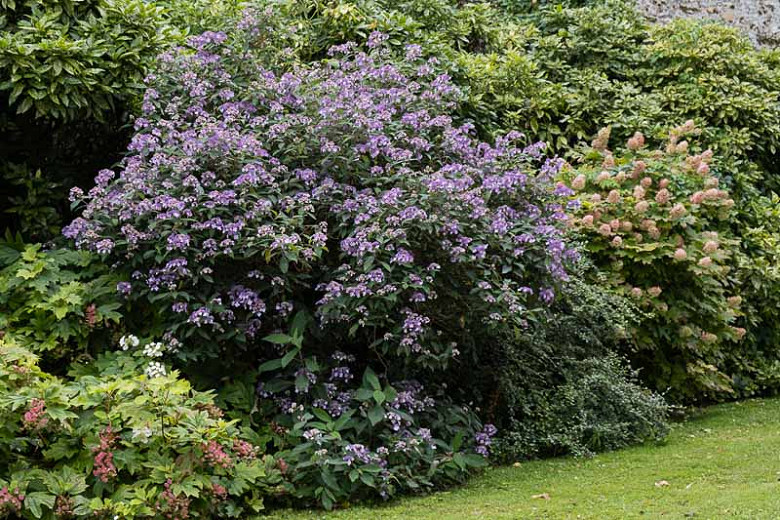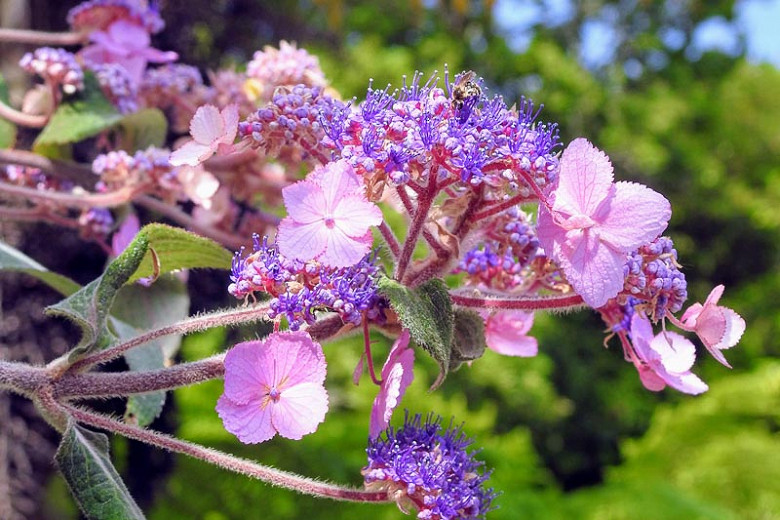The Roughleaf Hydrangea: A Versatile And Easytogrow Shrub
The RoughLeaf Hydrangea: A Versatile and Easy-to-Grow Shrub
Hydrangeas are some of the most popular shrubs in the world, and for good reason. They come in a wide variety of colors, sizes, and shapes, and they can be grown in a variety of climates. One of the most versatile and easy-to-grow hydrangeas is the roughleaf hydrangea (Hydrangea aspera).
Roughleaf hydrangeas are native to eastern Asia, and they are hardy in USDA zones 4-8. They can grow up to 6 feet tall and wide, and they have large, coarse leaves. The flowers of roughleaf hydrangeas are white or pink, and they bloom in late summer and early fall.
Roughleaf hydrangeas are a versatile shrub that can be used in a variety of settings. They are often used as foundation plantings, but they can also be used as hedges, specimen plants, or in mixed borders. Roughleaf hydrangeas are also deer-resistant, which makes them a good choice for gardens in areas with high deer populations.
Roughleaf hydrangeas are easy to grow. They prefer full sun or partial shade, and they need well-drained soil. They are not particularly drought-tolerant, so they should be watered regularly during the summer months. Roughleaf hydrangeas do not need to be fertilized often, but they can benefit from a light application of fertilizer in the spring.
Roughleaf hydrangeas are relatively pest- and disease-free. However, they can be susceptible to leaf spot and powdery mildew. If you notice any signs of pests or diseases, you can treat them with an appropriate fungicide or pesticide.
Roughleaf hydrangeas are a beautiful and versatile shrub that is easy to grow. If you are looking for a hydrangea that is hardy, versatile, and easy to care for, then the roughleaf hydrangea is a great choice.
Main Content
- Planting Roughleaf Hydrangeas
Roughleaf hydrangeas are best planted in the spring or fall. When planting, choose a site that gets full sun or partial shade. The soil should be well-drained. Amend the soil with compost or other organic matter before planting.
- Caring for Roughleaf Hydrangeas
Roughleaf hydrangeas are relatively easy to care for. Water them regularly, especially during the summer months. Fertilize them with a balanced fertilizer in the spring. Deadhead the flowers to encourage new blooms.
- Pests and Diseases
Roughleaf hydrangeas are relatively pest- and disease-free. However, they can be susceptible to leaf spot and powdery mildew. If you notice any signs of pests or diseases, you can treat them with an appropriate fungicide or pesticide.
- Propagating Roughleaf Hydrangeas
Roughleaf hydrangeas can be propagated by division or by cuttings. To propagate by division, dig up a mature plant in the spring or fall and divide it into smaller sections. To propagate by cuttings, take 4-6 inch cuttings from healthy stems in the spring or summer. Root the cuttings in a pot of moist potting mix.
- Winter Care for Roughleaf Hydrangeas
Roughleaf hydrangeas are hardy in USDA zones 4-8. In colder climates, they may need to be protected from winter winds and snow. You can do this by covering the plant with a burlap sack or by planting it in a sheltered location.
Conclusion
Roughleaf hydrangeas are a beautiful and versatile shrub that is easy to grow. They are hardy, versatile, and easy to care for. If you are looking for a hydrangea that is perfect for your garden, then the roughleaf hydrangea is a great choice.
Hydrangea villosa is a beautiful and delicate flower that is native to Asia. It is known for its large, fluffy blooms that come in a variety of colors, including white, pink, and blue. If you are interested in learning more about this fascinating flower, I suggest visiting .
This website provides a wealth of information about hydrangea villosa, including its history, cultivation, and care. You can also find beautiful photos of the flower, as well as tips on how to grow it in your own garden.
I highly recommend visiting if you are interested in learning more about hydrangea villosa. It is a great resource for gardeners, horticulturists, and anyone who simply loves beautiful flowers.
FAQ of hydrangea villosa
Q: What is hydrangea villosa?
A: Hydrangea villosa is a deciduous shrub that is native to China, India, and Vietnam. It is also known as the "velvet hydrangea" or the "hairy hydrangea" because of its hairy leaves and stems. Hydrangea villosa grows to be 2-3 meters tall and has large, flat-topped clusters of flowers that bloom in shades of white, pink, or purple.
Q: How do I care for hydrangea villosa?
A: Hydrangea villosa is a relatively easy plant to care for. It prefers moist, well-drained soil and partial shade. It is also tolerant of a wide range of pH levels, but it does best in acidic soil. Hydrangea villosa does not need to be pruned heavily, but you can remove any dead or diseased branches in the spring.
Q: What are the most common problems with hydrangea villosa?
A: The most common problems with hydrangea villosa are aphids, powdery mildew, and root rot. Aphids can be controlled with insecticidal soap or neem oil. Powdery mildew can be prevented by watering the plant in the morning so that the leaves have time to dry before nightfall. Root rot can be prevented by planting hydrangea villosa in well-drained soil.
Q: How do I propagate hydrangea villosa?
A: Hydrangea villosa can be propagated by cuttings or by division. To propagate by cuttings, take 4-6 inch cuttings in the spring or summer. Dip the cuttings in rooting hormone and plant them in a well-drained potting mix. Keep the cuttings moist and in a shady location. They should root in 4-6 weeks. To propagate by division, dig up a mature plant in the spring or fall and divide it into two or three sections. Replant the divisions in a well-drained location.
Q: Where can I buy hydrangea villosa?
A: Hydrangea villosa is available at most garden centers and online retailers.
Image of hydrangea villosa
5 different images of Hydrangea villosa from Pinterest:
- Image 1: A close-up of a Hydrangea villosa flower, showing the delicate white petals and the furry sepals.

- Image 2: A full-bloom Hydrangea villosa bush, with its large, white flowers cascading down.

- Image 3: A Hydrangea villosa plant in its natural habitat, growing in a shady woodland.

- Image 4: A Hydrangea villosa leaf, showing the distinctive hairy underside.

- Image 5: A Hydrangea villosa seed head, with its fluffy white hairs.

Post a Comment for "The Roughleaf Hydrangea: A Versatile And Easytogrow Shrub"